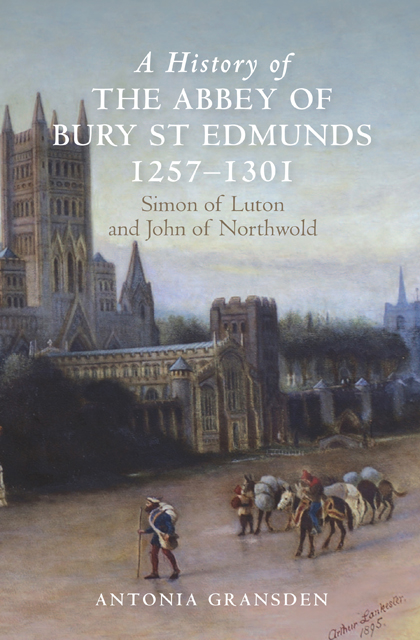Book contents
- Frontmatter
- Dedication
- Contents
- List of plates
- List of figures
- Preface
- Editorial note
- Dedication
- Acknowledgements
- Abbreviations
- Maps and plans (figures 1–11)
- Part I Introduction
- Part II Abbatial Governance
- Part III The Abbey’s Economy
- Part IV Religious Life and Reform
- Part V Intellectual and Cultural Life
- Appendix I The identity of the abbot’s justices, Henry of Guildford and Henry of Shenholt (in 1287)
- Appendix II The monks’ dietary regime: their food and drink
- Select List of the Registers and Customaries Cited
- Select List of Further Manuscripts Cited
- Select Bibliography
- Index
- Backmatter
8 - St Edmunds’ Mint
Published online by Cambridge University Press: 22 February 2023
- Frontmatter
- Dedication
- Contents
- List of plates
- List of figures
- Preface
- Editorial note
- Dedication
- Acknowledgements
- Abbreviations
- Maps and plans (figures 1–11)
- Part I Introduction
- Part II Abbatial Governance
- Part III The Abbey’s Economy
- Part IV Religious Life and Reform
- Part V Intellectual and Cultural Life
- Appendix I The identity of the abbot’s justices, Henry of Guildford and Henry of Shenholt (in 1287)
- Appendix II The monks’ dietary regime: their food and drink
- Select List of the Registers and Customaries Cited
- Select List of Further Manuscripts Cited
- Select Bibliography
- Index
- Backmatter
Summary
Conflict between St Edmunds and the Crown began before Abbot John’s succession, in the time of Abbot Simon of Luton. One early cause of trouble was Edward I’s reform of the coinage. Reform was begun as a result of discussion in the parliament at Gloucester in July and August 1278. There had been no change in the currency for more than thirty years and the coinage had become debased. A preliminary to the issue of a new coinage was the recall of the old, and preliminary to that was an inquiry into the clipping of coin, followed by the arrest and trial of suspect goldsmiths and keepers of mints. There were mass arrests of Jews for this offence, followed by their conviction and execution. On 3 March 1278, Henry of Winchester, a Jewish convert and one of the king’s agents in entrapping coin-clippers, was arrested in the abbot’s hall in Bury by the abbey’s steward, William Muschet – though in subsequent litigation, it was revealed that he was under the king’s protection on ‘special business’.
According to the Bury chronicler, five goldsmiths and three others were taken from Bury St Edmunds to London that winter. The chronicler also says that, although this was done by a town bailiff and not by a royal official, many regarded it as an infringement of the Liberty of the banleuca. When the king realized this, he sent the prisoners back for trial in Bury. However, this trial caused grave offence, for it was conducted by two royal justices, John of Cobham (Kent) and Walter of Helion (‘de Heliun’) (Gloucestershire). They held a court in the Guildhall and assigned the amercements to the royal treasury – the sacrist even had to pay a fine of 100 marks ad redempciones. Their holding of the court was itself contrary to the privilege that no royal ‘minister’ could exercise office within the banleuca, and the abbot, not the king, should at least have had the amercements. Thus, writes the chronicler, ‘they flouted the liberties of St Edmund’s church in an unheard-of way, without regard for either papal or royal privileges’.
- Type
- Chapter
- Information
- A History of the Abbey of Bury St Edmunds, 1257-1301Simon of Luton and John of Northwold, pp. 63 - 69Publisher: Boydell & BrewerPrint publication year: 2015



